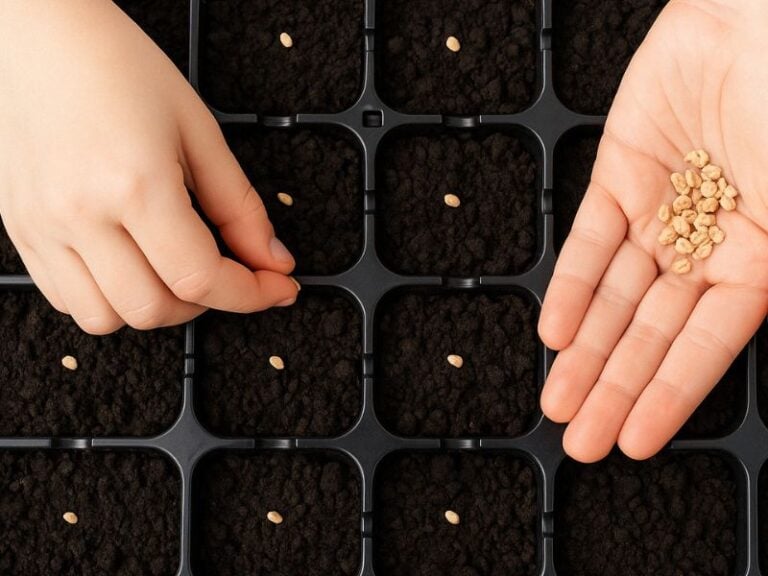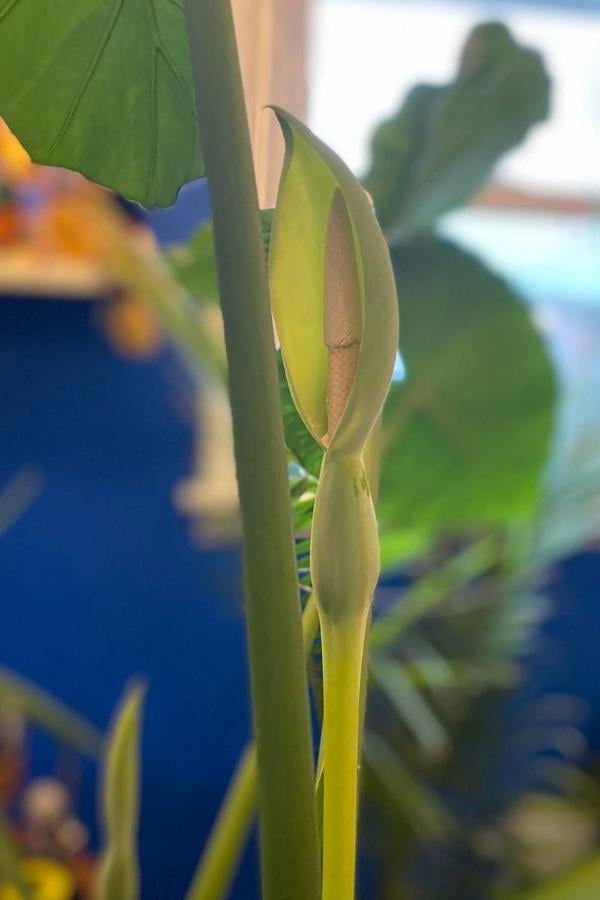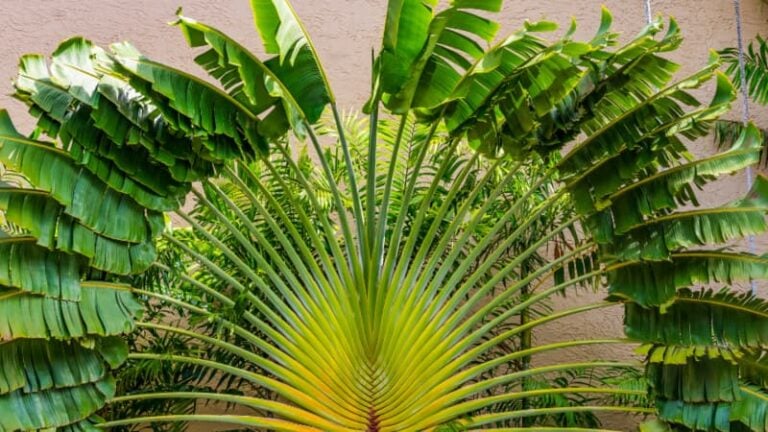Watering mistakes are the most common reason for houseplant troubles. It’s easy to get over-enthusiastic when caring for your plants, protecting them from drought, and giving them the best care possible.
But over-watering or watering too frequently can lead to issues like nutritional imbalances, oxygen deprivation, and rot.
Only a few houseplants can handle too much moisture, and even those that need a stable humidity level won’t cope well with soggy soil. For most of your favorite plants, it’s better to err on the side of under-watering.
Giving your plants too much water—either too often or excessively—can prevent the soil from drying out, disrupt its structure and air permeability, and create a perfect environment for harmful microorganisms to thrive.
This can lead to root and shoot rot. Stagnant water in trays, improper drainage, and a hardened soil surface with puddles are bad news for your plants.
A few watering slip-ups might not cause any noticeable issues, but if these problems worsen, your plants can suffer.
Telltale signs of trouble include loss of elasticity, dullness, wilting of healthy leaves, and brown or black spots.
It’s often easier to diagnose the issue by checking the soil for a sour, moldy, or sometimes ammoniacal smell, clumping, and droplet release when squeezed.
Under-watering is better than over-watering for most houseplants (except aquatic species).
While only cacti might thrive in complete drought, the risks of over-saturating the soil are much greater than those of using a more cautious approach to watering.
Bulbs, cacti, and succulents—including jade plants, aloe, snake plants, and hippeastrum—are well-known for their sensitivity to over-watering. They can rot with even the slightest excess of moisture.
But even among “regular” houseplants, many don’t cope well with dampness. It’s not always obvious which plants are susceptible to over-watering, as many love constant humidity but also can’t handle complete drought.
Now, let’s explore 10 popular houseplants that need a careful touch regarding watering.
Contents
1- Begonias

With the variety of begonias available, everyone can find a plant to their liking. The luxurious leaves of decorative foliage varieties or the charming blossoms of beautifully flowering begonias are so unique.
However, all begonias share a dislike for overwatering. Overwatering these plants can lead to a quick demise.
Water begonias very carefully. Their preferred stable soil moisture is achievable only by constantly monitoring the soil’s dryness level.
As a precaution, immediately drain the water from the trays and let the top an inch (2-3 cm) of soil dry out before the next watering.
2- Citrus Plants

Oranges, lemons, and other fragrant favorites may seem long-lasting and super-reliable, but they cannot tolerate soil compaction or dampness, not even in winter.
To enjoy a healthy crown of shiny leaves, fragrant blooms, and abundant fruiting, you must monitor the substrate’s condition, preventing water from accumulating at the bottom of pots even during heavy summer watering. And avoid using cold water.
3- Geraniums

Thanks to their luxurious large-flowered varieties, geraniums are once again in fashion. But the more stunning the variety, the more sensitive it is to improper care.
Geraniums require frequent feeding, abundant watering, and protection from waterlogging. They can perish from rot even if you drain the water from the trays promptly but do not allow the top layer of the soil to dry out.
4- Ficus

Reliable and affordable, ficus plants thrive with moderate watering. Ficus benjamina, rubber plants, and other varieties fear overwatering or cold water more than drying out.
Regular overwatering disrupts the soil’s air permeability, a necessary condition for the average growth of both compact and gigantic ficus varieties.
To avoid mistakes, it’s better to err on caution and let the substrate dry out slightly more between watering—down to a third in the summer and half in the winter.
5- Zebra plant (Aphelandra)

It’s hard to say what’s more attractive in this rather large and bright shrub—the dark, wrinkled leaves with light, thick veins or the vibrant spike-like inflorescences with unusual bracts.
The zebra plant requires a winter rest period, but to avoid problems, it needs consistent, moderate watering throughout the year, including summer.
Water stagnation is deadly for zebra plants, and you can only save the plants by re-rooting the tops if the soil is severely over-watered.
6- Clivia

Few things can compare to the flowering of clivia. Blooming more lavishly as it ages, clivia has deservedly earned the nickname “Bush lily” Luxurious tubular flowers in clusters above lush fans of tongue-like leaves require special care and conditions.
But the biggest mistake in growing clivia is careless watering. This plant cannot tolerate water stagnation in trays.
Drain excess moisture immediately after watering, and before the following procedure, ensure that the top 1-2 inches (3-4 cm) of soil has dried out completely.
7- Ornamental Pepper

Adorned with a medley of multicolored fruits that change color as they ripen, compact and attractive ornamental peppers are surprisingly sensitive to excessive moisture.
Over-water the pepper a couple of times, and the plants may perish within a few days.
For ornamental peppers, maintain constant but light substrate moisture. Water stagnation in the tray is far more dangerous than severe soil drying.
8- Episcia cupreata (Flame Violet)

The fiery violet episcia seems like one of the easiest houseplants due to its love for warmth and modest care.
However, despite its sensitivity to complete substrate drying, water stagnation, and overwatering are even more dangerous for this fantastic houseplant with velvety leaves, delicate, flexible shoots, and bright red tubular flowers.
9- Poinsettia

The Christmas star, known for its vibrant top bracts that brighten winter spaces, is often not kept for the next year.
However, growing poinsettias as seasonal plants require attentive care, including cool temperatures, consistent lighting, appropriate feeding, and regular soil moisture checks.
Stagnant water is the primary cause of leaf drop. Even with minor overwatering, poinsettias can lose their decorative charm in weeks.
10- Camellia

The exquisite, luxurious flowers with their unmatched textures and beautiful dark leaves of this indoor legend more than makeup for the challenges of growing and finding a cool place for it to bloom.
Despite its affinity for moisture and recommendations for maintaining consistent soil humidity, camellias don’t tolerate overwatering.
Allow the top layer of soil to dry out between watering sessions. Let the substrate dry out halfway when the dormancy period and blooming season arrive. You can check the moisture level by hand or with special indicators.
What To Do If Your Plant Has Been Overwatered?
To avoid excessive soil moisture, remember these three basic rules for sensible watering:
- Learn about the specific moisture requirements of each plant species and follow watering recommendations closely (differences at various stages of development, the degree of substrate drying, watering methods, etc.).
- Always monitor soil dryness before watering again.
- Check the water quality and temperature.
In any uncertain situation, choose the safest option—slightly more cautious, sparse watering rather than overdoing it.
While the consequences of overwatering may be daunting, they are not irreversible. Overwatering will only lead to plant death if the situation is neglected. If the watering mishaps were not constant, a simple care adjustment would help.
Before the next watering, let the soil dry out more intensely, gently loosen the surface layer, and place the pot on moisture-absorbing materials (sand, perlite, towels, etc.) to remove excess moisture from the lower soil layers quickly. Adjust the watering frequency moving forward.
Simple measures won’t be enough if there are signs of root damage or moldy soil. An emergency repotting is a challenging and often deadly procedure, but it’s the only way out of the situation.
Cutting away all damaged areas after washing and inspecting the roots, treating them with fungicides, and drying the cuttings before planting in new, disinfected soil are typical steps for any emergency repotting.
If rot has reached the growth points and shoots, you’ll have to save the plant through propagation—by rooting the top or taking cuttings to produce healthy offspring.






